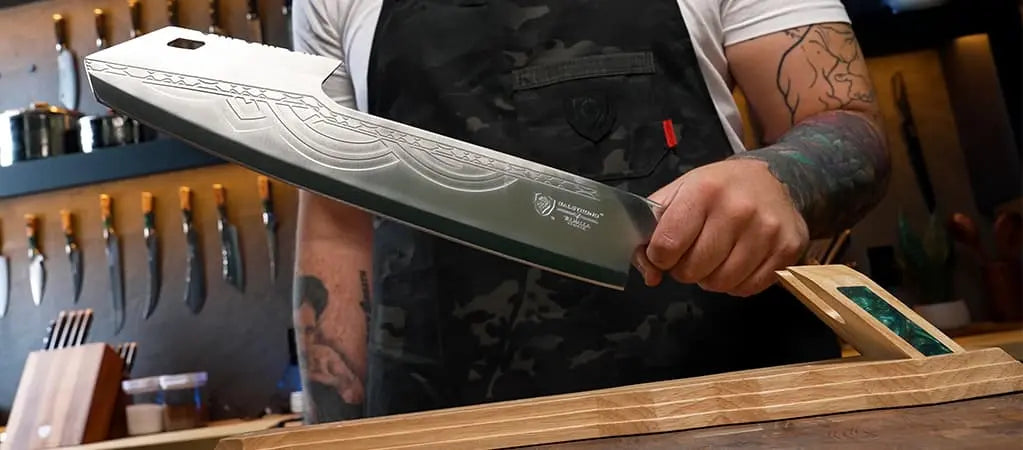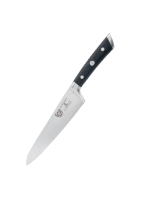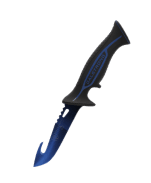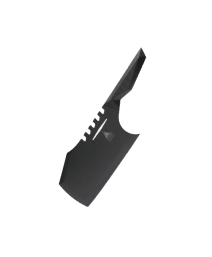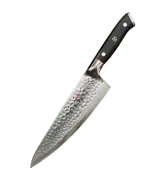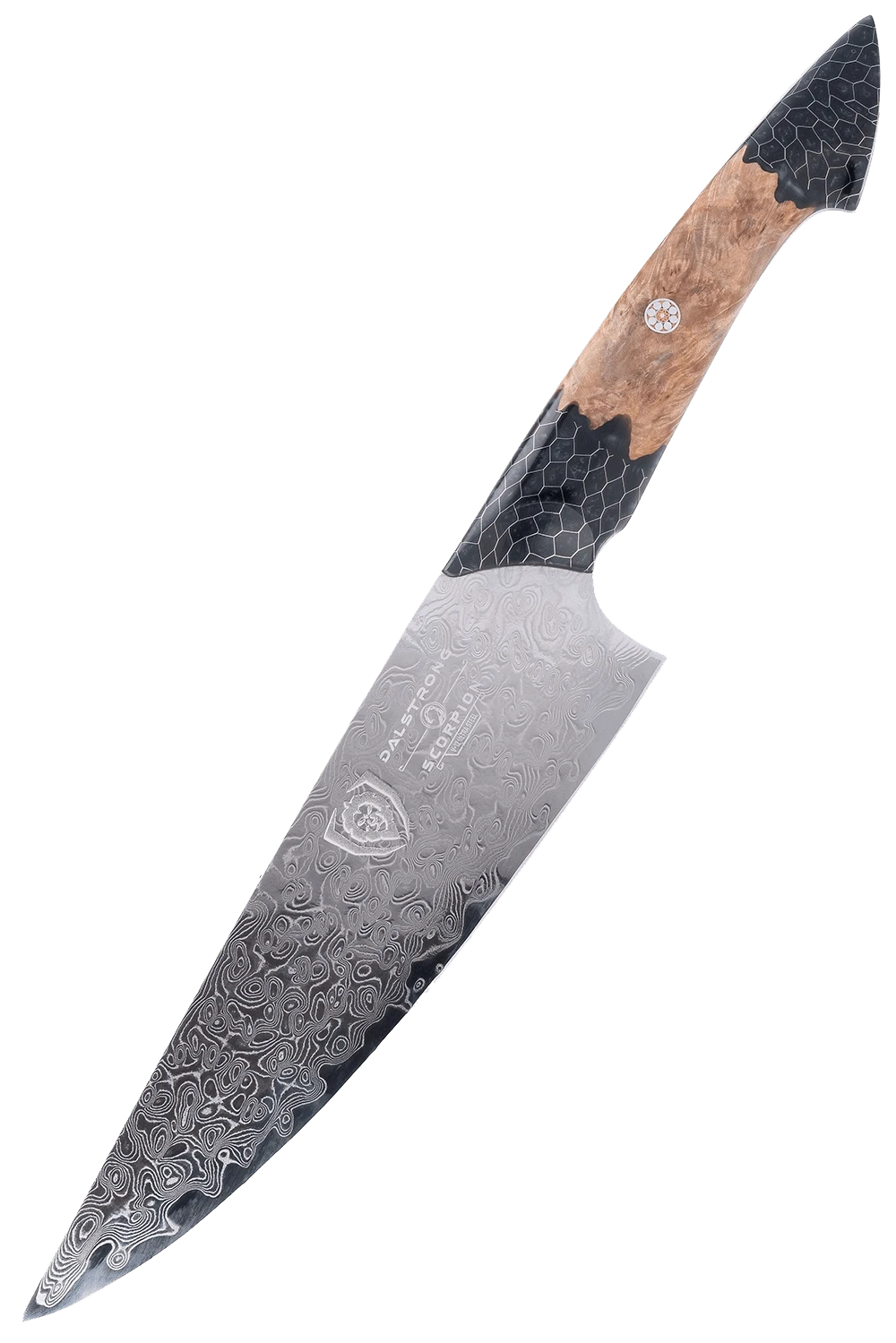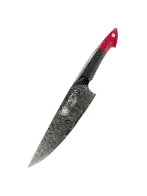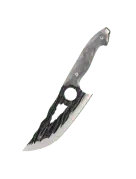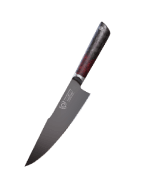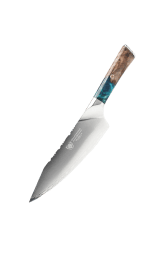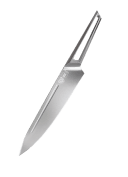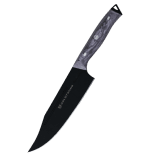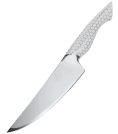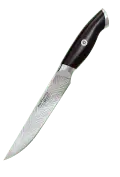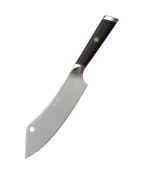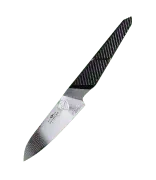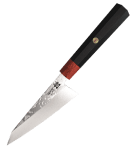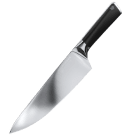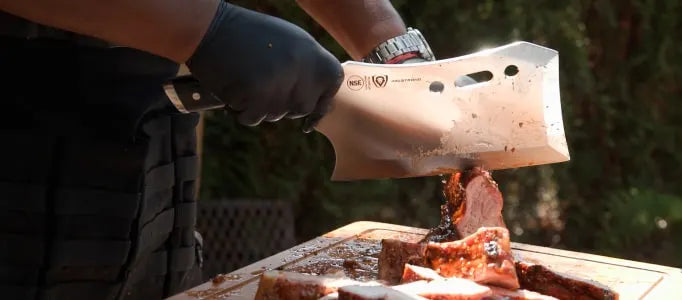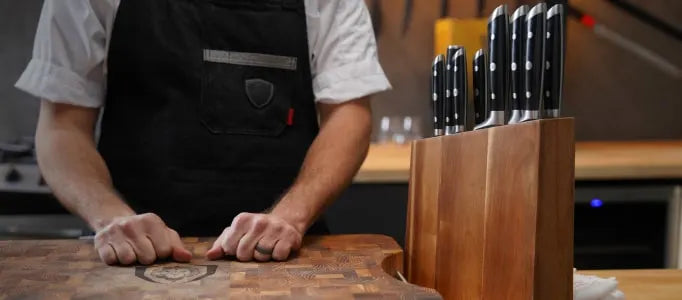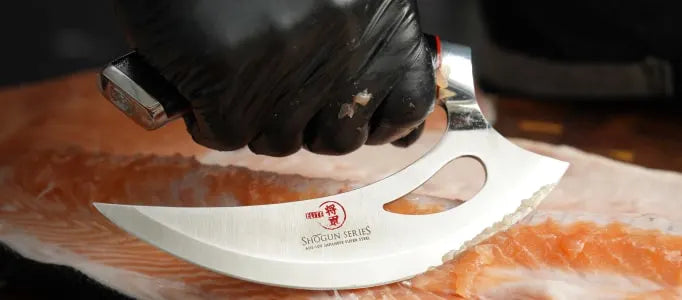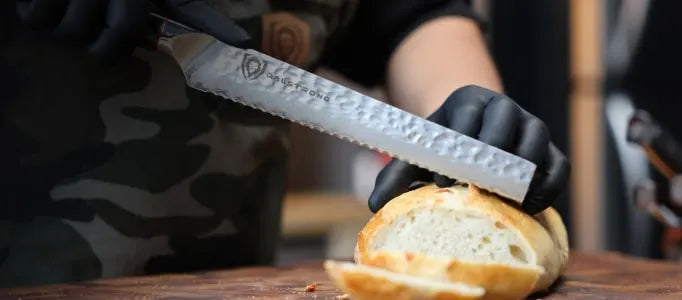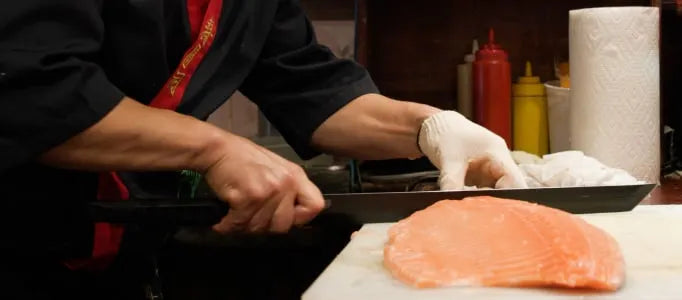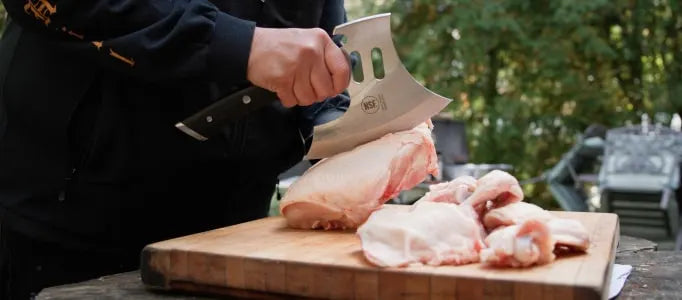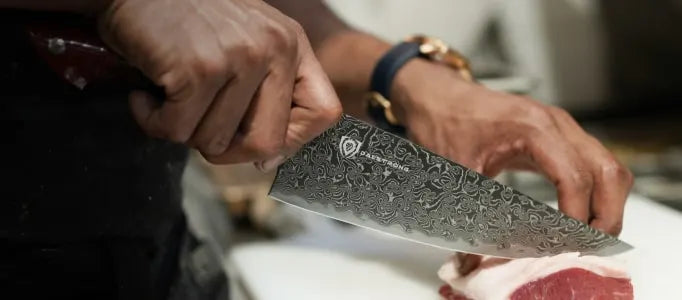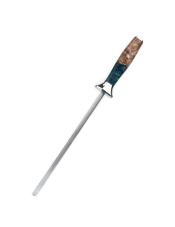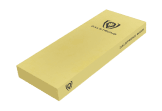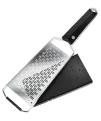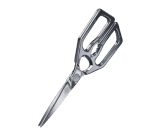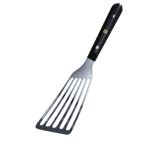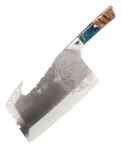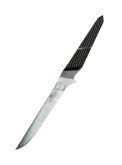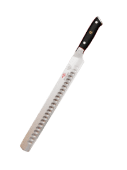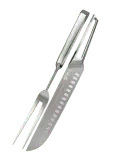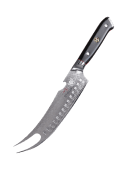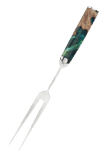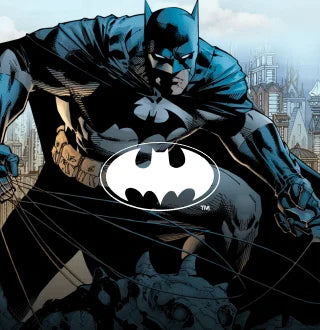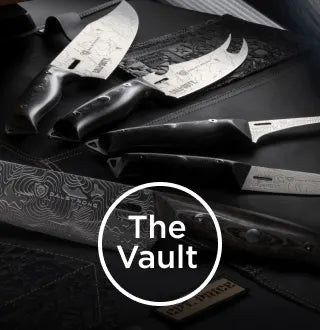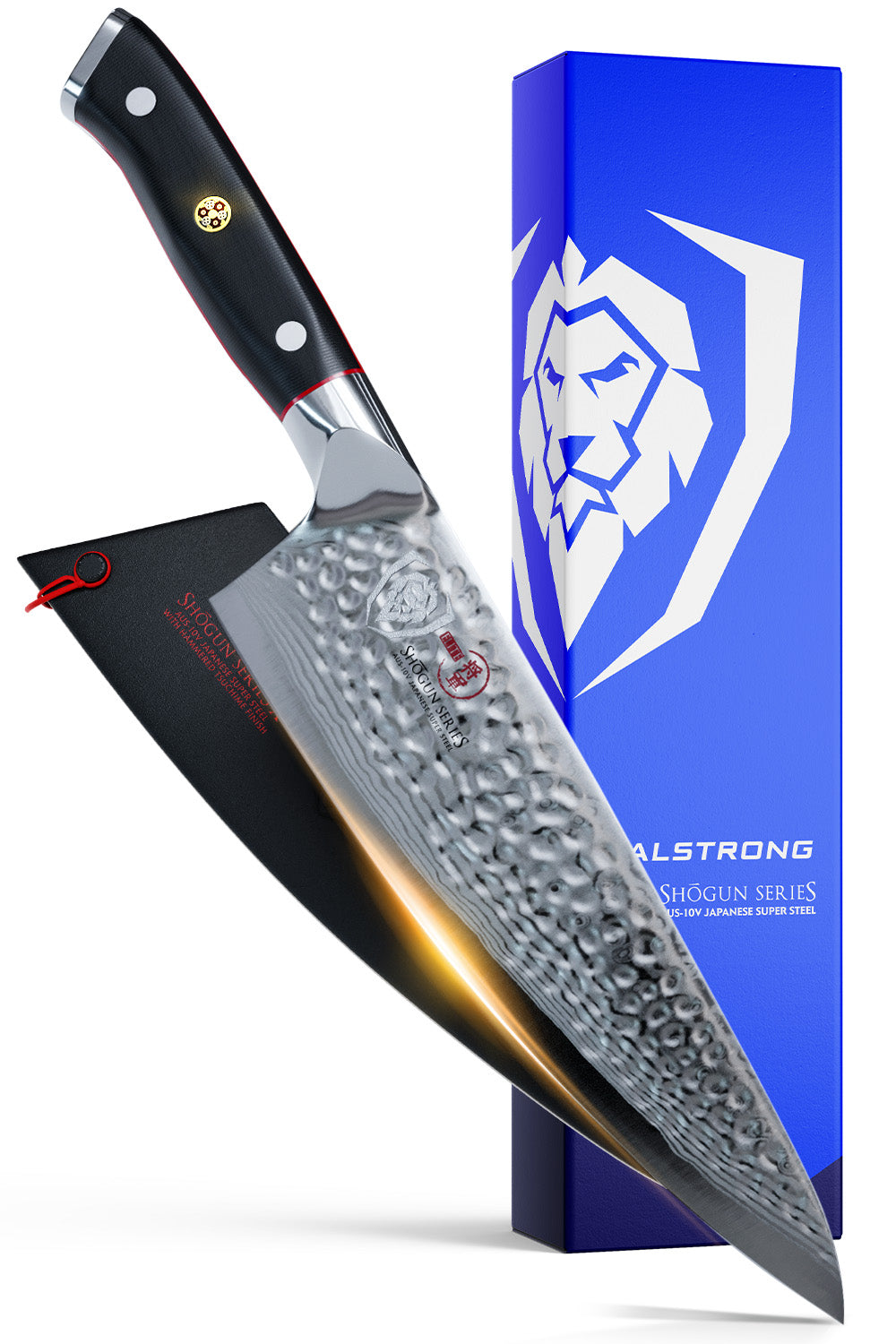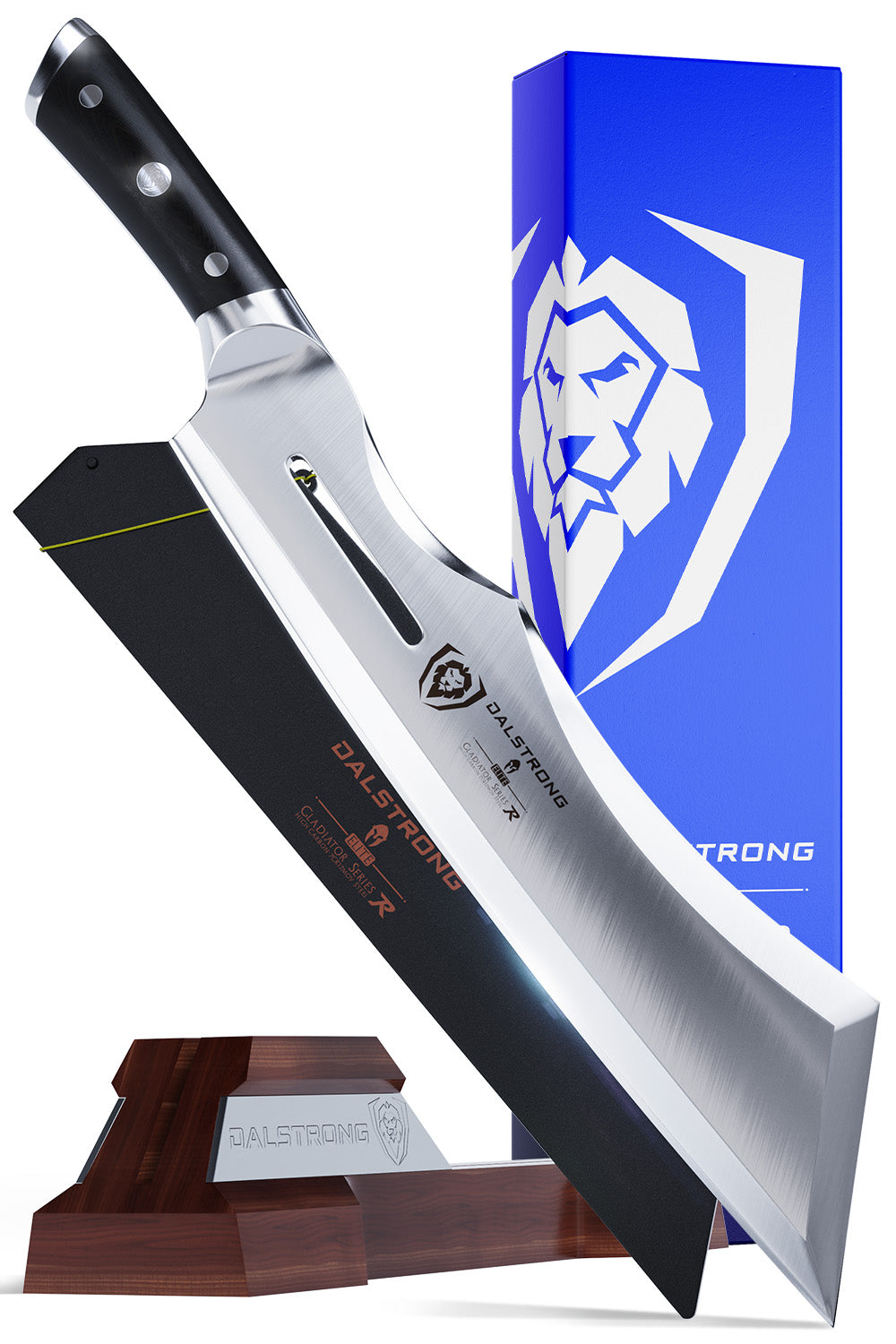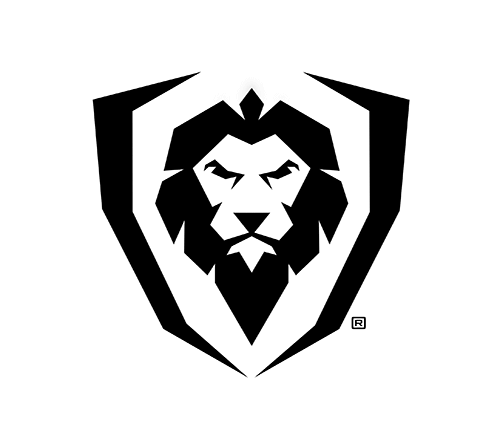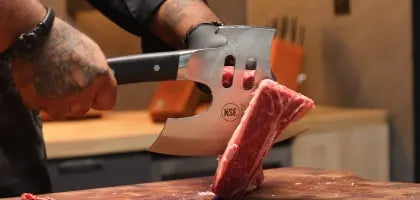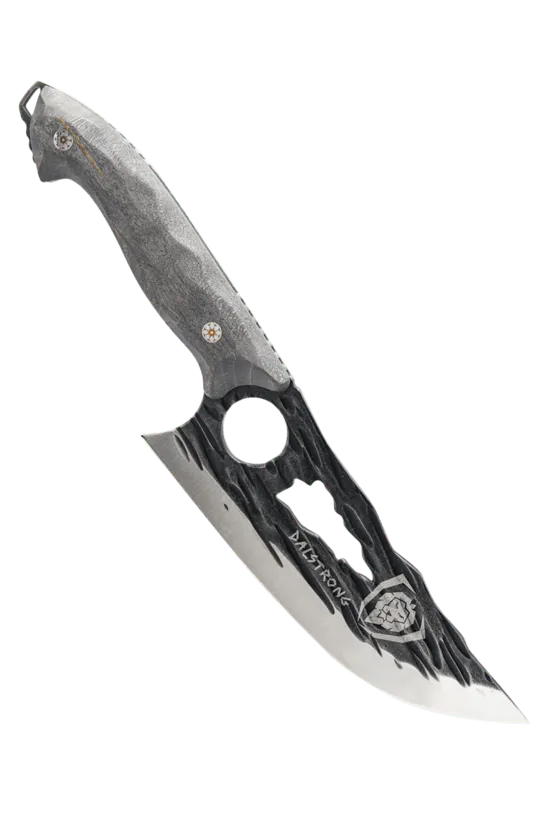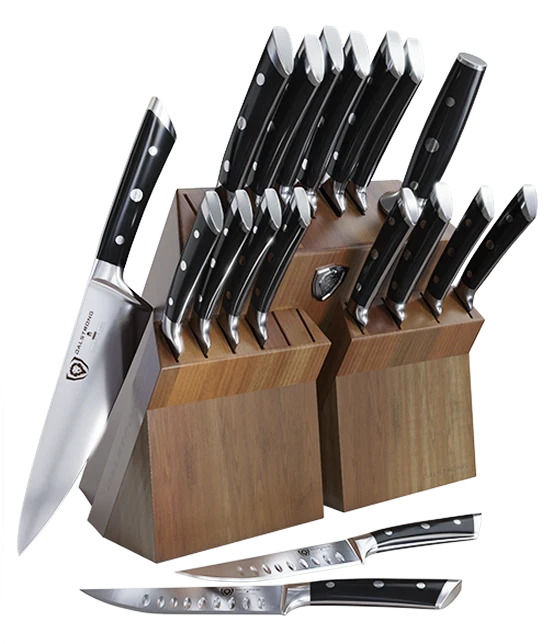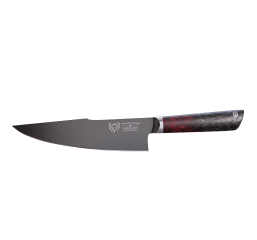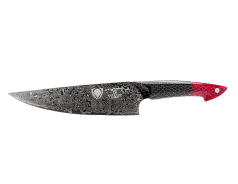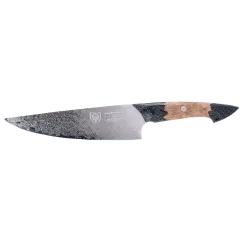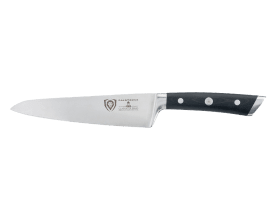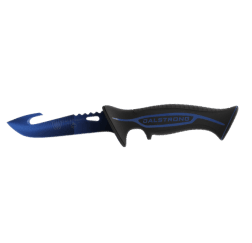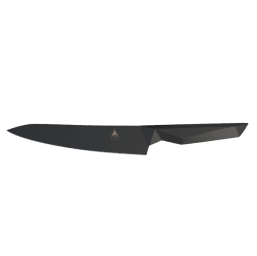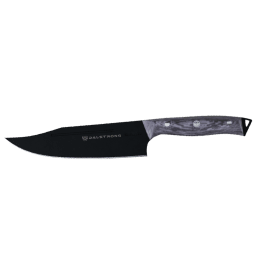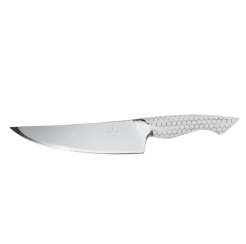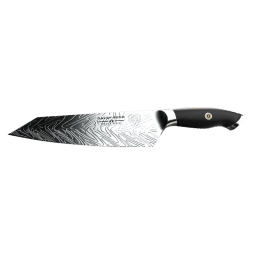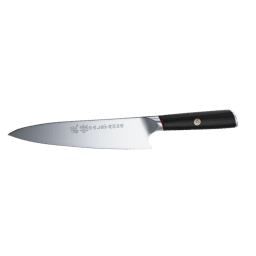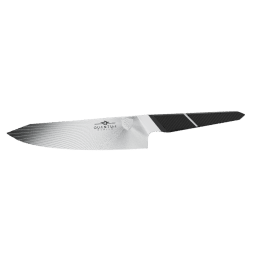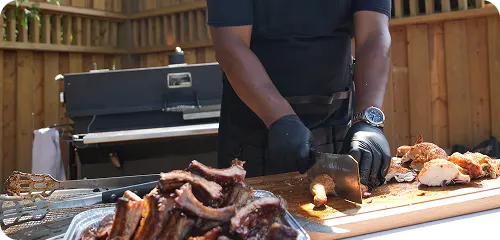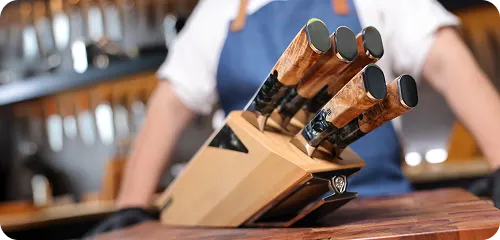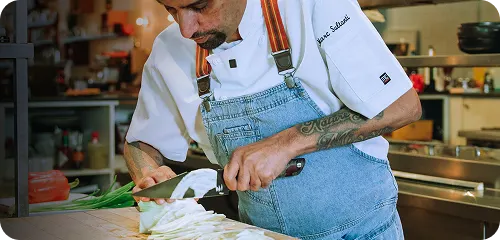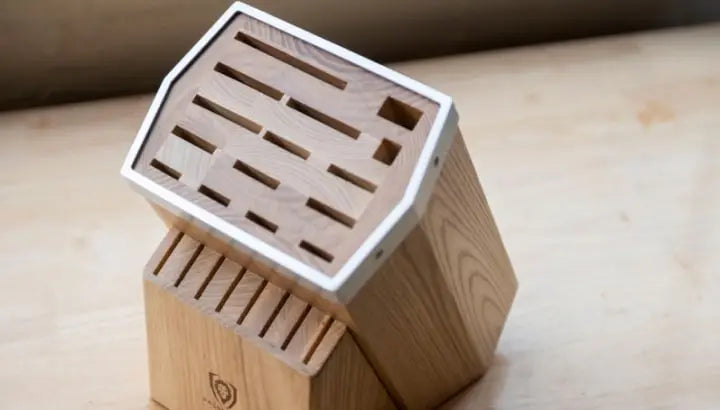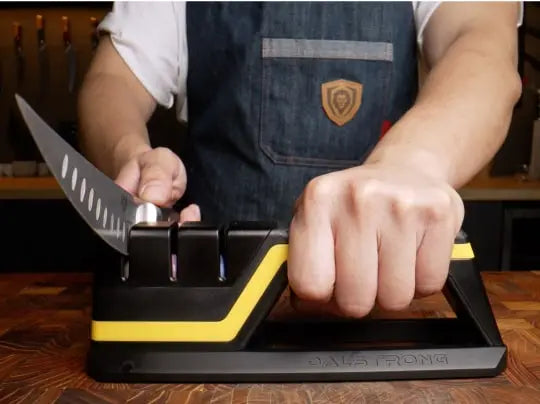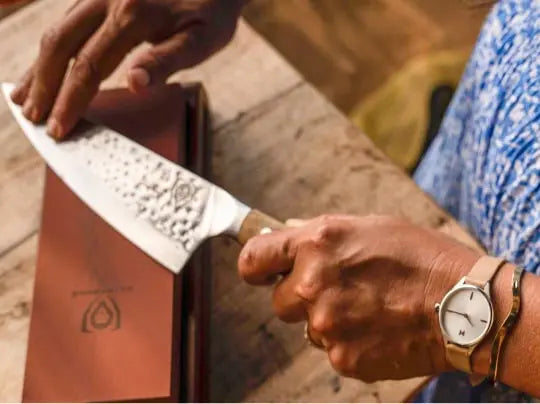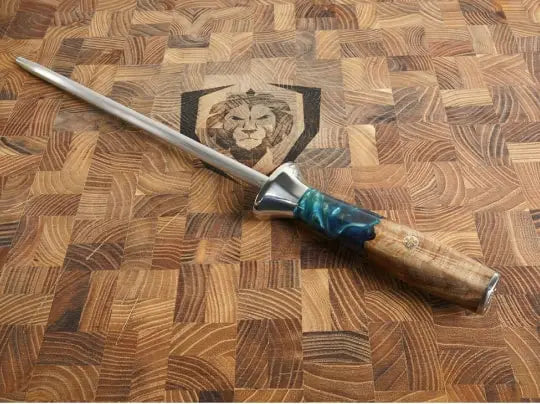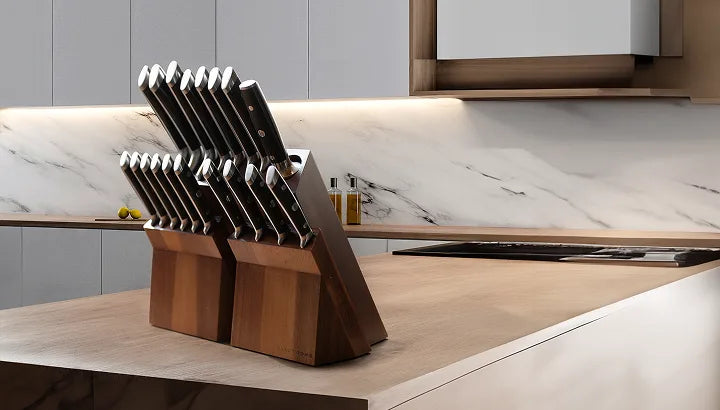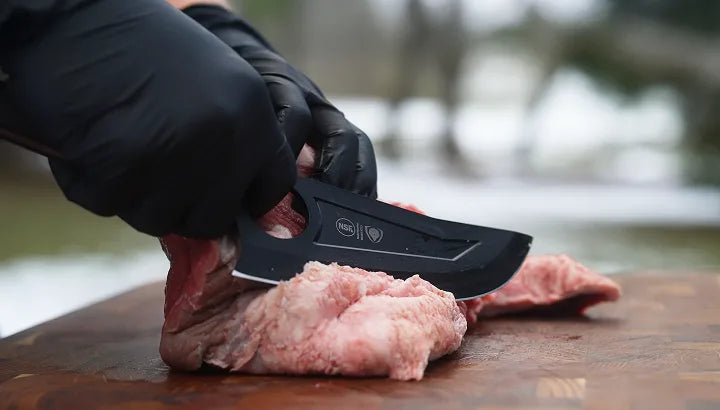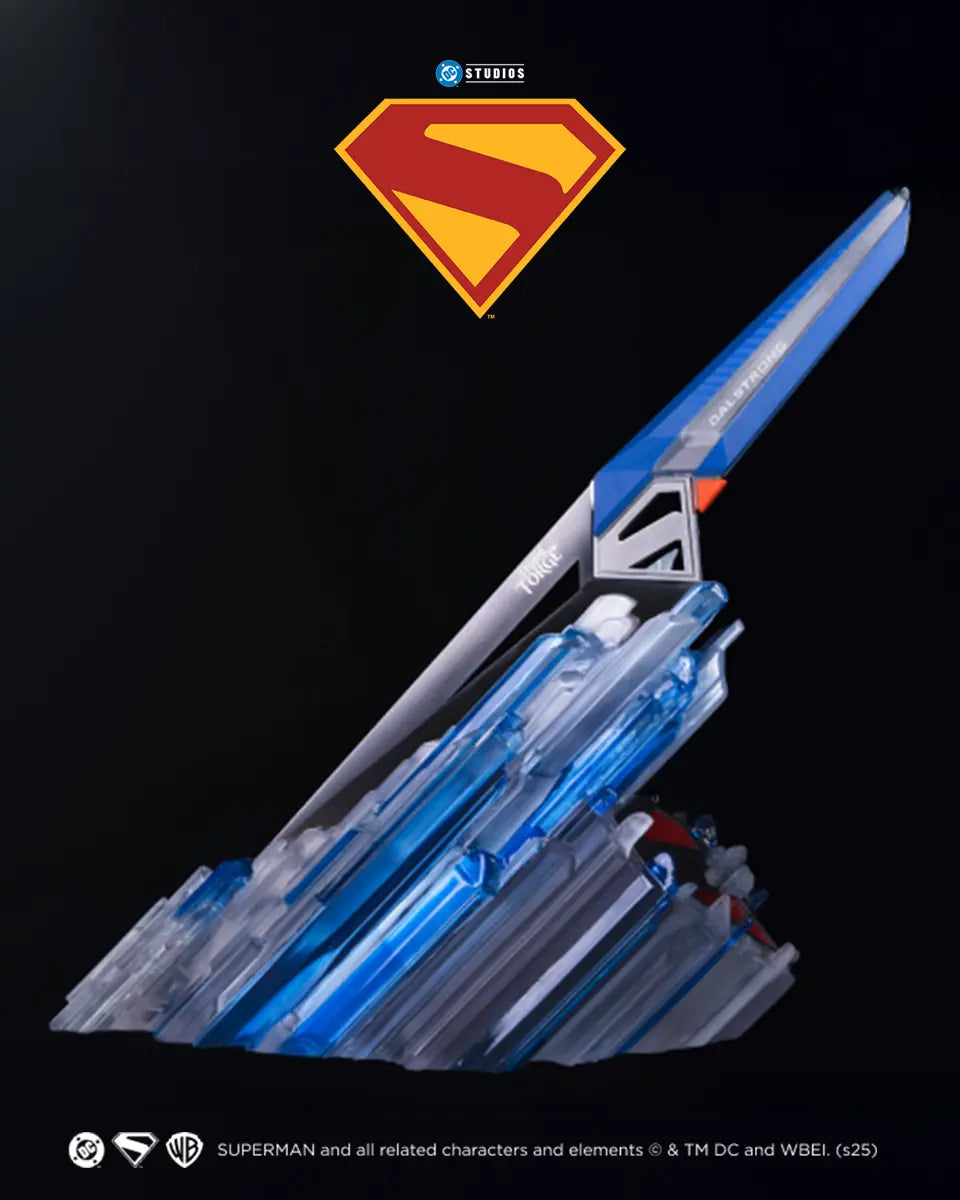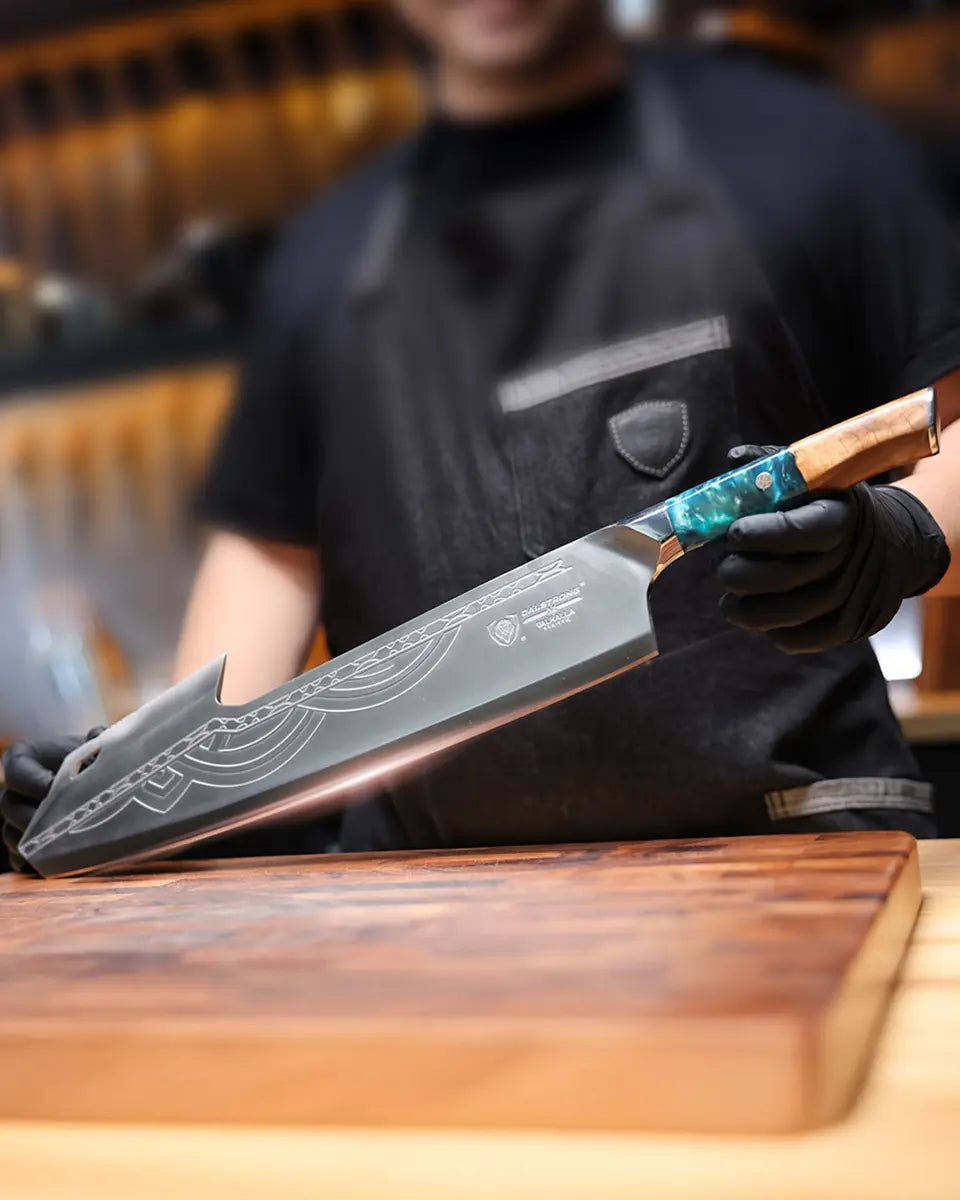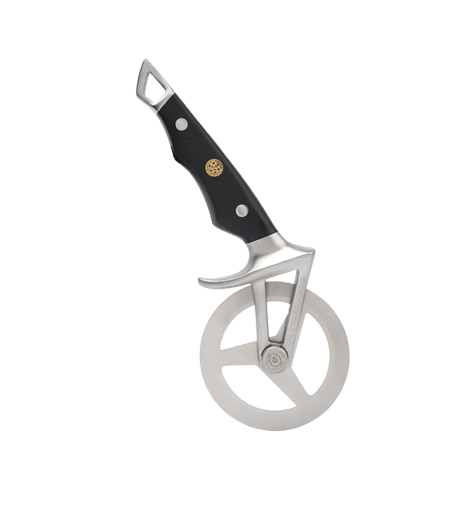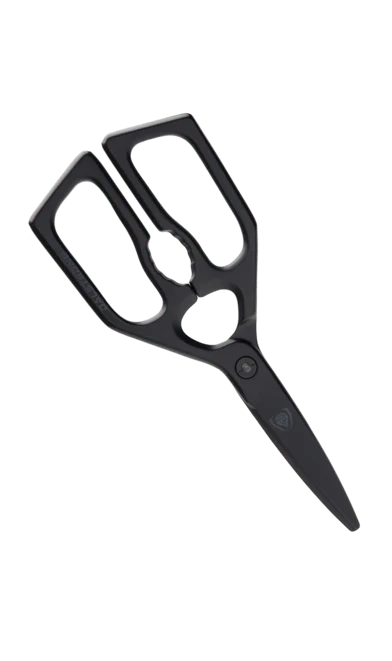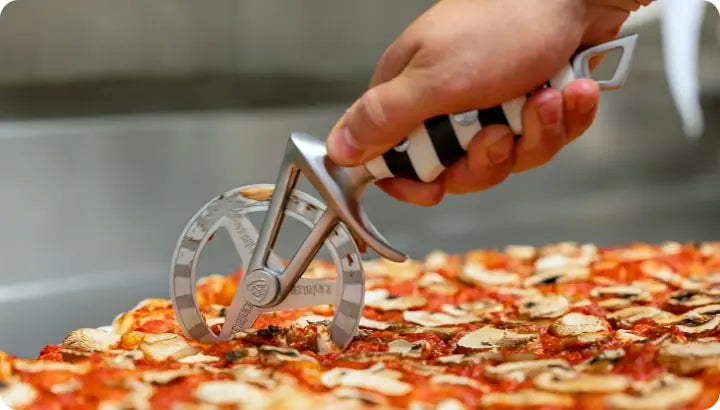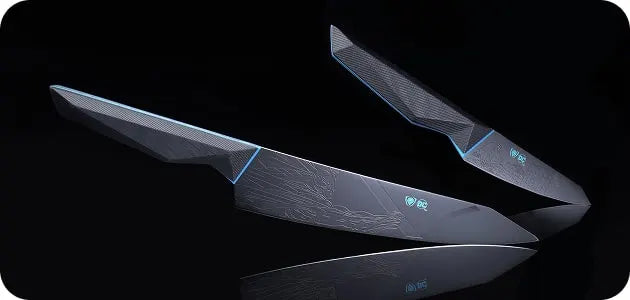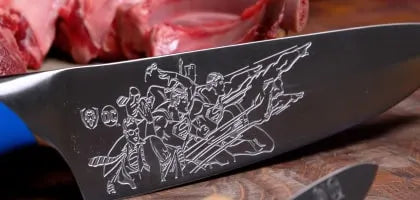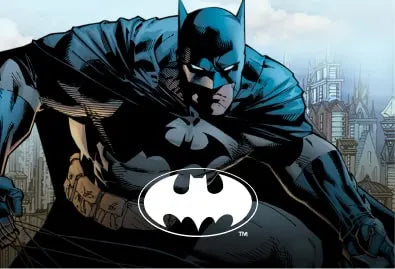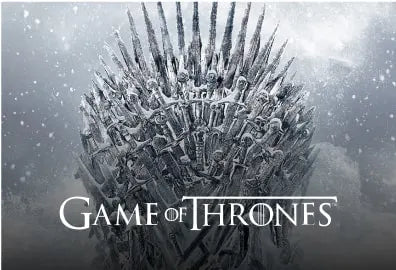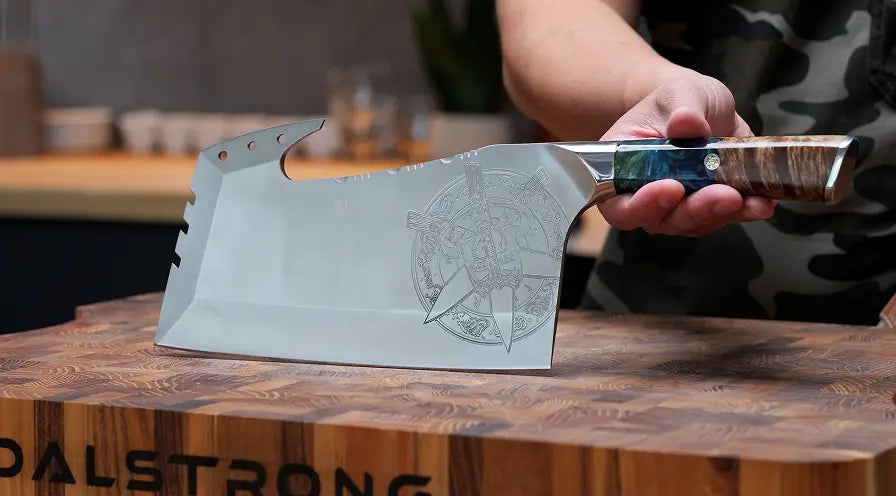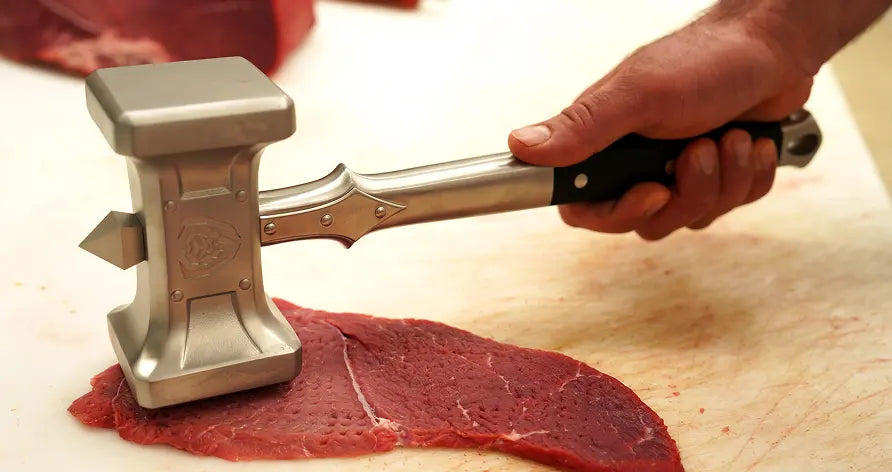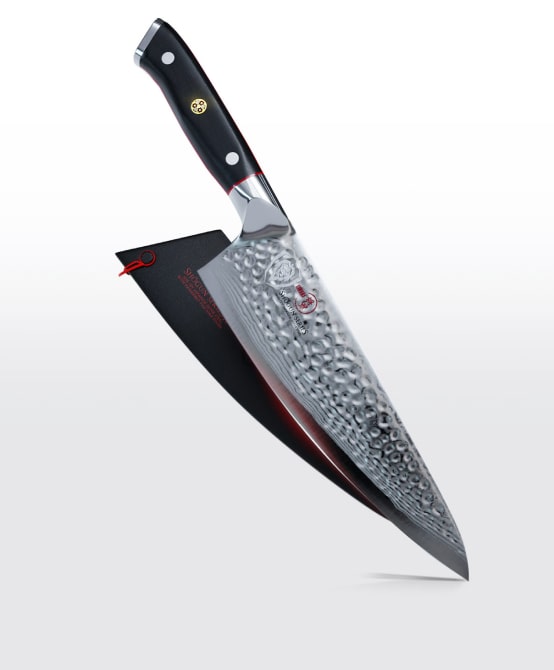 Bull Nose Butcher Knife 10" | Delta Wolf Series
Bull Nose Butcher Knife 10" | Delta Wolf Series
What Is The Sharpest Knife In The World?
A sharp blade is the most important part of any knife. You may have heard about Obsidian blades being the sharpest material in the world, but the truth is, they’re not ideal for kitchen knives due to their brittle nature. A professional kitchen knife with this blade can’t take on large or oddly shaped foods and can snap into two.
Be it chefs knives, boning knives, paring knives, steak knives, fillet knives, or even top-of-the-line Santoku knives, using a knife with materials like stainless steel, German steel, Damascus steel, Japanese steel, and high carbon stainless steel, will never disappoint you – And, here’s everything you need to know about them.
In this blog, I’ll be walking you through the best Dalstrong knives according to your preference, the facts to consider before making your purchase, and how to keep your knives sharp.
1. What Is An Obsidian Blade?

Obsidian is essentially volcanic glass. The material is formed when the magma is squeezed and pushed down against the Earth’s surface. When cooled down rapidly, you get Obsidian. This material has a long history of being used in ancient times to make arrows, Samurai swords, and scalpels and was the sharpest knife in the world for the same reasons. While this is the sharpest material to work with, it’s not feasible to make a professional kitchen knife.
Kitchen knives undergo a knife test to check their sharpness and compatibility with knife sharpeners, and Obsidian blades crack and break during this process due to their thin, paper-like width. Here’s a quick summary of the qualities that the sharpest knife in your kitchen arsenal should have.
Some factors to consider include hollow edges on a sharp blade along with an ergonomic handle, pakkawood handle, or a stainless steel handle that is comfortable to hold and that passes the knife test.
Most important of all, a knife is sharp when it passes the paper or tomato test to check its sharpness. The blade material used on professional chef knives also needs to be compatible with kitchen sharpeners.
Obsidian’s biggest disadvantage is that it can cause jagged cuts that require invasive medical attention – This is also why they’re avoided in restaurants by chefs and by home cooks, too. Today, Obsidian blades are only used by surgeons when they need to work with state-of-the-art scalpels and other medical equipment.
These knives can cause serious injury when used with large or round foods that are challenging to cut with a serrated knife or a utility knife, too. However, many blade materials are stronger, more durable, and ten folds efficient and versatile than Obsidian. Let’s talk about that a little bit more.
2. Different Blade Materials Used For Kitchen Knives
 Serbian Chef's Knife 8" | Shogun Series | Dalstrong
Serbian Chef's Knife 8" | Shogun Series | Dalstrong
Stainless Steel
Stainless steel is by far, the most popular choice of knife material, and there are plenty of choices there too – Such as German ThyssenKrupp, Japanese, American, and highcarbon stainless steel. This is for a variety of reasons. They’re rust, corrosion, and stain-resistant, which instantly increases their durability. They’re low in maintenance, clean significantly more easily than other knife materials, and are dishwasher-friendly, too.
But, you can handwash your kitchen knife with a metal scrubber, too. And, don’t fret, they won’t take on any damage. In my opinion, the most impressive part about stainless steel knives is their ability to not cold onto strong fragrances of spices, tea, coffee, and other seasonings and sauces. This makes your favorite knife sets sanitary and clean to use.
There are multiple factors to consider when choosing a sharp knife, but stainless steel knives lasting for generations on end make the process all that easier. This material is an excellent conductor of heat too, so you don’t have to worry about oils and other liquids latching onto it. These knives usually have a wood handle attached to them.
German Steel
German stainless steel, better known as German ThyssenKrupp steel, is great for a variety of reasons, including sustainability. German steel is famous for its wear-resistant, ultra-sharp, precision-forged qualities.
If you’re particular about achieving uniform and precise cuts on meats and veggies, this material was designed for you. Not only is it long-lasting and durable, but steelmakers also produce this material by using significantly less energy in the manufacturing process which then reduces emissions of greenhouse gas.
German steel is also less expensive than other materials while not compromising on quality, precision, and durability. The raw materials used when producing German steel are also of the highest quality which undoubtedly gives you a sharp knife with a sharp blade. These knives are equipped with an ergonomic handle made of stainless steel or wood.
Damascus Steel
Damascus steel is produced by using sheets of steel and iron and mixing it with charcoal in a no-oxygen environment. This allows is reduced and preserved steadily for top-notch cast Damascus steel. The eloquent wavy pattern on a knife is formed by mixing Wootz steel and maintaining it at a consistent temperature.
Damascus steel is known for its sturdiness, precision, and dexterity. These knives have a wood handle with rivets to keep the body of the knife super strong. This is ‘precisely’ why it’s slightly on the expensive side, but is a great investment, nonetheless. The blade is so incredibly robust that it encourages and maintains a safe kitchen environment with little to no mishaps – Just remember to sharpen your knives occasionally. Learn more about Damascus steel here.
Japanese Steel Or High-Carbon Steel
Japanese knives like Santoku knives are the epitome of function-meeting form, thanks to the carbon content in the material. If cared for well, it can be the sharpest knife in your knife set with robust, resilient, and sturdy blades – Perfect to chop up some ginger or minced garlic.
Japanese knives need to be patted dry with a paper towel after each use. Oiling the blade will also give you precise cuts as there is less dragging this way. Maintaining them will also keep them free of rust and corrosion.
Knives with this material are hardened at 56+ Rockwell and are perfect for home cooks who want to expand their skills. This steel has less chromium present, so it can be sharp, but also a tad prone to rust and corrosion. So, just make sure you pat them dry after washing. These knives have an elegant pakkawood handle for an ergonomic feel. If you need more information about Japanese steel and knives, you may read more here.
3. Sharpest Dalstrong Knives Your Kitchen Needs
1. Chef's Knife 10" Gladiator Series | NSF Certified
The blade on this chef’s knife is wear-resistant and made with high carbon German ThyssenKrupp steel, hardened at 56+ Rockwell. This professional kitchen knife can be cleaned with very little effort and is incredibly low in maintenance. Enjoy the full tang blade for a robust chopping and slicing experience, thanks to the ergonomic handle shape that offers tremendous grip and is comfortable to hold.
Pros:
- High amounts of chromium added for stain resistance.
- Tapered design for easy maneuvering.
- Premium quality ABS polymer handle for all the durability you need.
Cons:
- The blade could be overwhelming to work with for home cooks.
- While the handle is comfortable to hold, you may prefer a traditional approach with a handle made entirely with stainless steel.
2. Deba Knife 6" Single Bevel | Ronin Series
Japanese high-carbon steel is known for its hardness and flexibility, which is why this 6-inch Deba knife is one for the books. This knife is cryogenically tempered with liquid nitrogen which provides the blade with a crystalline structure and keeps it sturdy. The hot-forged Liquid Kusari pattern is designed to reduce stuck-on food particles and drag as you slice.
Pros:
- Hand-polished with the infamous Honbazuke 3-step method.
- Ergonomic handle.
- An elegant copper mosaic pin on the center rivet to turn heads.
Cons:
- If you’re not big on slicing sashimi or nigiri, then a Japanese knife might not suit your cooking needs.
- You may prefer another material instead of the Japanese high-carbon AUS-10V steel on this knife.
3. Serrated Chef's Knife 7.5" Shogun Series ELITE
I love a good serrated knife! This serrated knife is a step up from a classic chefs knife and is the perfect length for both, home cooks and seasoned chefs. Made with a Japanese super steel core with 67 layers of Damascus, it’s safe to say, this knife is the epitome of robustness. The corrosion and rust-resistant cladding is the cherry on top to maintain this knife for years on end.
Pros:
- Full tang for minimal slicing resistance.
- The ergonomic handle has a non-slip grip which is also impervious to cold, heat, and moisture.
- Razor-sharp blade that’s sharpened at 62+ Rockwell.
Cons:
- Not a huge fan of serrated knives? Then, a classic chefs knife would be better suited for you.
- If you prefer a different material on your knife’s blade, this knife might not come up trumps.
4. How To Keep Your Knives Sharp
 Dalstrong Portable Whetstone Kit - #1000/#6000 Grit Combo - with Oak Storage Box
Dalstrong Portable Whetstone Kit - #1000/#6000 Grit Combo - with Oak Storage Box
All you need to keep your knives sharp are Dalstrong’s knife sharpeners. Each sharpener has a specific grit that can be used on the blade, depending on what is required.
The grit ranges from #600 - #1000. You can read more about sharpening stone grits here. Follow the steps below to use your knife sharpeners at their full potential.
How To Use Knife Sharpeners
Steps:
- Soak the whetstone in chilled water for at least 10-15 minutes.
- Once the whetstone is damp, place it flat-side up and angle the knife at 20 degrees.
- Start sweeping and sliding the knife, starting from the blade, and going towards the tang.
- Repeat the same process on the other side of the knife and stop when the knife has reached your desired sharpness.
- Move to the tip. Angle at 20 degrees and sweep and slide again – Gentler this time. Flip and repeat.
- Continue this process for 10-15 minutes and once you have a smooth and sharp blade, you’re good to go.
Find out why dull knives are more dangerous in the kitchen than the sharpest ones here.
5. Frequently Asked Questions
What is the sharpest knife material?
Knives with an Obsidian blade are considered the sharpest in the world, but this material is not fit for making kitchen knives as they’re extremely coarse and brittle.
Which is the best knife in the world?
This depends on what qualities you value the most in a knife. Price point – Is the knife budget-friendly? Appearance – Does the knife match your culinary aesthetics? There are plenty of factors to consider, but with over 15 knife collections at Dalstrong, you can never go wrong.



